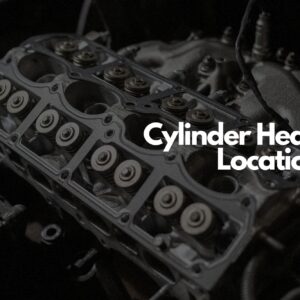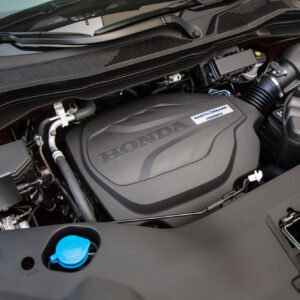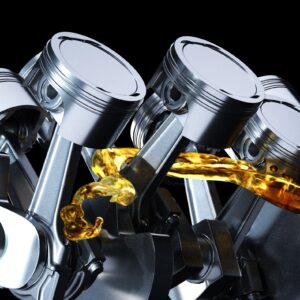Also known as a misfiring cylinder, a dead cylinder happens when one of the engine’s cylinders stops producing power. If your car has a four-cylinder engine, then one dead cylinder means losing one-fourth of its power. This also means your engine is still likely to run as it relies on the remaining three cylinders. However, just because your vehicle can still function, this doesn’t mean you can just ignore the issue. While a lot of people do, it’s best not to.
Is Driving With a Dead Cylinder Safe?
We don’t recommend driving around with a dead cylinder. One dead cylinder will likely lead to another, causing your engine to lose even more power.
Of course, this depends on why the cylinder is misfiring. If it’s a mechanical problem (like a burned valve) and it’s a newer vehicle, a newer engine platform will be operating on PCM algorithms that will shut off the injector on the misfiring cylinder.
As an aside, this can confuse a troubleshooter who finds that the injector isn’t working on a misfiring cylinder because he or she will think the injector is the cause of the misfire when it’s not. But the point is that to protect the catalyst, the PCM is programmed this way on newer cars.
Ever since there have been engines in vehicles, there have been people who will keep driving even with a misfiring cylinder, and a great number of engines continued to operate for years with one dead cylinder. That’s not healthy for the engine or the environment if for some reason fuel is still being delivered to the misfiring cylinder, and on older vehicles, fuel continues to flow.
On older vehicles that continue to deliver fuel to a misfiring cylinder, the unburned fuel can overheat the catalytic converter and also release those poisonous hydrocarbons into the air through the exhaust. Some of the fuel will wind up in the crankcase, thinning the engine oil.
This can make your vehicle unpredictable, putting you at greater risk of getting into an accident. In some cases, a dead cylinder can also cause excess vibration, damaging other engine components. Before it gets to that point, it’s best to fix the dead cylinder as soon as possible.
How To Fix a Dead Cylinder
Unfortunately, there’s no quick fix when it comes to cylinder misfires. You’ll have to determine the root cause before you can start fixing it. Here are some tips on how to diagnose a dead cylinder:
Spin the Engine And Listen
If one cylinder doesn’t have the compression that the rest of the cylinders do, you’ll hear that one cylinder pick up speed every time it should be squeezing air. You can recognize this if you listen carefully, and that’s a good first step. If one cylinder isn’t squeezing air, you just need to find out which cylinder that is and check the compression. Low compression means the engine needs internal repairs.
Use a Scan Tool
If the engine sounds normal when it’s spinning, break out the scan tool. When a cylinder misfires, the powertrain control module (PCM) will record error codes that can point you to the misfiring cylinder and may even indicate the source of the problem.
For example, a P0303 indicates a misfiring cylinder number 3. If you get a fault code P0353 that points to the #3 coil primary or secondary fault, you have a pretty good chance of fixing the misfire with a coil and a spark plug (or a set of spark plugs to be smart). But usually you’ll just get the misfire code, and then you need to zero in on that cylinder to find out what’s going on.
Inspect the Spark Plugs
Okay, so let’s say you found that P0303. Now you want to remove the plug wire or COP coil, (blow the trash away from the hole before removing the coil), then remove and inspect the spark plug on that cylinder. If the plug is wet with fuel, it might just be a bad spark plug, so replace that one plug first and see if the misfire goes away. If it does, you’re done.
If the plug is fouled with engine oil and/or heavy crusty deposits, the problem is deeper. The engine is using oil and replacing the plug might be a temporary fix.
If the spark plug is cracked or has carbon tracks down the outside of the plug’s ceramic, replace the plug and the wire to prevent recurrence of that same issue, and replace all the other plugs.
Perform a Compression Test
You may not always hear a difference in the way the engine sounds when it spins if the compression is just a bit low rather than zero.
Mechanics will screw a compression gauge into one of the spark plug holes, disable the fuel and ignition systems, and spin the engine with the throttle wide open so that the cylinder “puffs” at least six times.
The gauge will hold the highest pressure and when that cylinder’s compression is compared to the other compression readings (all plugs should be removed for this test).
Based on the gauge’s reading, they’ll determine if the misfire is due to compression issues.
Test the Coil Pack
If there are no spark plug or compression issues, then you might be dealing with a faulty coil pack. The clearest way to see if the coil is an issue isn’t with a multimeter – you just need to use a spark tester to see if that coil or coil tower is delivering spark to the misfiring plug. If it’s not, replace the coil. If it is, it should be bright blue and downright scary. If it’s yellow and weak on that cylinder but the other plugs are getting a bright, blue spark, replace the coil.
What Causes a Dead Cylinder?
Diagnosing a dead cylinder can be difficult, especially because there are several possible causes behind it. Here are some of the most common causes of a dead cylinder:
Faulty Spark Plug, a COP Coil, or an Inoperative Injector
The most common cause of a dead cylinder is a faulty spark plug, and the second most common cause is a problem with a COP coil or coil pack. Number three would be an issue with an injector, either an air leak around the base of the injector, a problem with the injector itself, or a wiring issue that keeps the injector from working.
Faulty or worn spark plugs can lead to a number of other issues, so it’s best to replace them as soon as possible.
Worn Piston Rings
Every piston has at least three rings: 2 compression rings and an oil ring (which consists of 2 thin rings and a separator). The oil ring can fail even though the compression rings are good and foul the plug on a cylinder.
The compression rings can fail and allow the cylinder to misfire for lack of compression. The air escapes past the rings and into the crankcase on every compression stroke.
Burned Valve(s)
Intake and exhaust valves allow air and fuel to enter the combustion chamber and exhaust gases to exit. If they’re burned so they don’t seat properly, bent or worn out, they can cause the cylinder to misfire and can be found with a compression test.
Malfunctioning Lifter
The camshaft lobes open the valves by reacting with the lifters. When a lifter fails, the valves will also malfunction, causing the engine to misfire. Usually, a lifter will be noisy before it begins to cause a misfire.
Damaged Cylinder Head Gasket
When the cylinder head gasket fails, compression can leak to the outside of the engine or from one cylinder leaks into another and the lost compression will manifest itself as a misfire. If the head gasket allows coolant to seep into a cylinder after the vehicle is parked, it may cause a misfire for 30 seconds or so until the coolant dries off the plug. This is more common than it might seem.
Clogged or Malfunctioning Fuel Injectors
The fuel injectors are all supposed to deliver the same amount of fuel. If one isn’t delivering the fuel properly as a mist, or if it’s delivering not enough, or if it’s dripping and fouling the plug, or if it’s simply not operating at all, it’ll cause a misfire.
Common Dead Cylinder Symptoms
Ignoring a misfiring cylinder is a recipe for disaster. Not only are you at greater risk of getting into an accident, you’re also likely to deal with a bigger repair bill. Bring your vehicle to a mechanic as soon as you notice any of these symptoms:
Loss of Power
Is your engine having a hard time accelerating? Acceleration issues are among the most common signs of misfires.
Reduced Fuel Efficiency
A failed cylinder can cause your engine to use more fuel than necessary, which means you’re likely spending more money on gas as well.
Loud Noise From the Engine
When a cylinder fails due to a cracked cylinder head, the decreased compression and interrupted combustion can cause the engine to make loud knocking or tapping noises.
White, Black, or Blue Smoke
If your vehicle is emitting smoke, then look at the color of the smoke. White smoke is coolant, black smoke is unburned fuel, and blue smoke is oil. Troubleshoot accordingly.
Flashing or Illuminated Check Engine Light
Different engine issues can trigger the check engine light, including a misfiring cylinder. A dead misfire will cause the check engine light to flash. An intermittent misfire will usually cause it to flash first and then remain illuminated and the PCM will store a misfire code pointing you to the guilty cylinder.
Getting Your Hands On Replacement Cylinder Parts
Dead cylinders and inoperative cylinder parts need to be replaced as soon as possible. It’s strongly recommended to avoid driving with a dead cylinder because even if it’s technically possible, it comes with unnecessary risks.
With the help of CarParts.com, finding replacement cylinders and related parts has never been easier.
To get started, use your mobile device or computer to visit our website. Input all of your vehicle’s details such as the year, make, model, and engine with the vehicle selector. This way, you can find components that are compatible with your vehicle.
We source parts from the most trusted manufacturers in the industry. A team of professionals handpicks each item from our catalog to guarantee quality and longevity. You won’t have to worry about your new cylinder failing you any time soon.
The best part? Our distribution centers are strategically located all over the US, meaning you can expect to receive your orders in as fast as two business days.
Don’t hold off on replacing a bad cylinder. Browse our collection now!
Any information provided on this Website is for informational purposes only and is not intended to replace consultation with a professional mechanic. The accuracy and timeliness of the information may change from the time of publication.







































